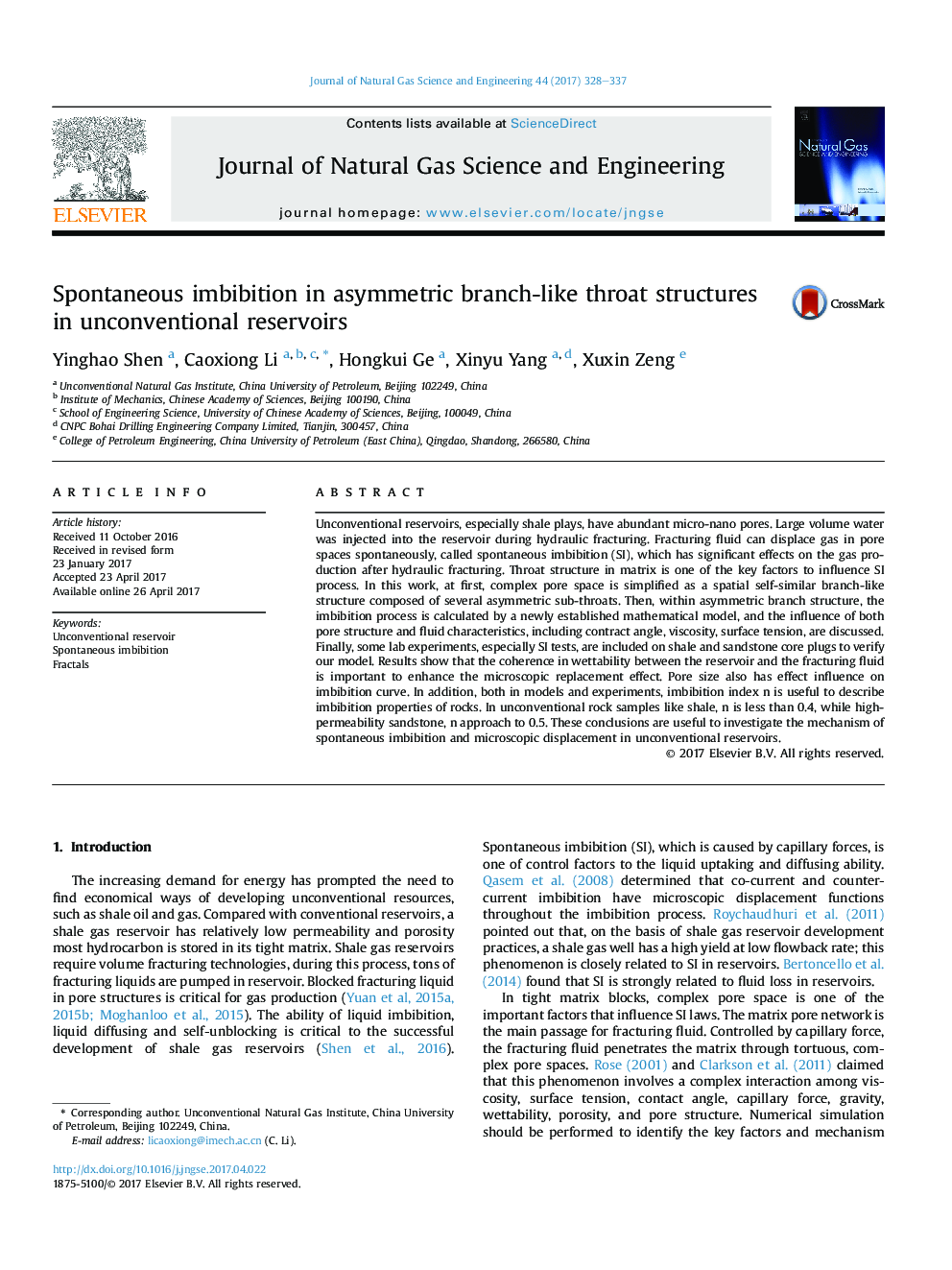| Article ID | Journal | Published Year | Pages | File Type |
|---|---|---|---|---|
| 5484921 | Journal of Natural Gas Science and Engineering | 2017 | 10 Pages |
Abstract
Unconventional reservoirs, especially shale plays, have abundant micro-nano pores. Large volume water was injected into the reservoir during hydraulic fracturing. Fracturing fluid can displace gas in pore spaces spontaneously, called spontaneous imbibition (SI), which has significant effects on the gas production after hydraulic fracturing. Throat structure in matrix is one of the key factors to influence SI process. In this work, at first, complex pore space is simplified as a spatial self-similar branch-like structure composed of several asymmetric sub-throats. Then, within asymmetric branch structure, the imbibition process is calculated by a newly established mathematical model, and the influence of both pore structure and fluid characteristics, including contract angle, viscosity, surface tension, are discussed. Finally, some lab experiments, especially SI tests, are included on shale and sandstone core plugs to verify our model. Results show that the coherence in wettability between the reservoir and the fracturing fluid is important to enhance the microscopic replacement effect. Pore size also has effect influence on imbibition curve. In addition, both in models and experiments, imbibition index n is useful to describe imbibition properties of rocks. In unconventional rock samples like shale, n is less than 0.4, while high-permeability sandstone, n approach to 0.5. These conclusions are useful to investigate the mechanism of spontaneous imbibition and microscopic displacement in unconventional reservoirs.
Related Topics
Physical Sciences and Engineering
Earth and Planetary Sciences
Earth and Planetary Sciences (General)
Authors
Yinghao Shen, Caoxiong Li, Hongkui Ge, Xinyu Yang, Xuxin Zeng,
